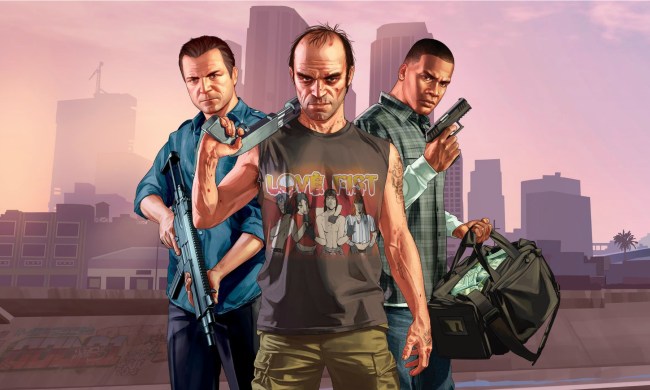If you’ve been unfortunate enough to be in a Discord call with me whenever Sifu has been shown off, you would know I’m pretty excited for the game. The kung fu beat-’em-up from Sloclap looks like it’s going to fill a very specific desire for me. Its seemingly precise yet furious combat reminded me of my days as a black belt back when I practiced Shotokan Karate. The two are different forms of martial arts, but the visual methodology is still there. Sifu has had me hooked from the get-go; all it had left to do was actually be enjoyable to play.
After playing through a very short preview of the game multiple times, Sifu is starting to look like a dream come true. Fighting is every bit as satisfying as it appears in the game’s trailers, but there are added levels of complexity underneath for players to discover and work with. Complex combos, attacks that require specific inputs, and a leveling system that constantly evolves all elevate Sifu far beyond a simple beat-’em-up and into one of the games I can’t wait to play in 2022.
Pulse-pounding combat
While the preview of Sifu didn’t go over the game’s story, it gave an all-encompassing look at what players can expect from the game’s pulse-pounding combat. In the nightclub, which has previously been shown in the game’s trailers, the first fight players will get into is with a bouncer. In this tight space, it’s easy to knock him against walls or get knocked against one yourself, which will introduce the game’s stun meter. Both the player and opponents can be stunned if hit enough, with enemies taking more damage and becoming vulnerable to throws once they’re winded.
In Sifu, fights against enemies can sometimes mean managing how stunned they are rather than simply depleting their health bars quickly. Sure, some enemies are basic and can quickly be taken out with a few punches, kicks, and open-hand strikes, but others are beefier and have actually trained. In fights like those, players will have to use the variety of attacks at their disposal to whittle down opponents before finishing them off.
Simple light and heavy attacks are the basis of any combo in the game, but more complex options are also available. by combining button presses with parries or moves of the joystick, players can perform specific and devastating attacks. An open palm strike to the abdomen knocks the wind of out an opponent, while a quick sweep can leave them vulnerable to a pummeling on the ground. Dodging and parrying on the other hand are all linked to the same button, and can be executed quickly enough that players can throw out attacks and then parry an enemy coming at them from the sides or behind.
Sifu‘s combat adds up to something that has a high skill ceiling and may not immediately make sense to everyone. The first time I tried fighting in the game — which was without a proper introduction — I was quickly pummeled by groups of enemies. But after getting to know the controls and developing a feel for how attacking and defending work, I could handily take out any enemy that approached me.

When combat doesn’t go so well for the player, Sifu‘s aging mechanic comes into play. A magic pendant prevents the game’s main character from dying outright, instead letting him come back a little bit older every time he’s dealt a fatal blow. Players start at age 20, but can quickly find their character reaching their twilight years if they don’t keep up the defense. However, the older the main character gets, the wiser they get as well. They’ll deal more damage to enemies, striking them with knowledge of the body’s weak spots and the confidence that comes with years of training. Naturally, they also take more damage, but the entire process can be slowed down.
The main character’s age increases by the number of times they’ve died, so if they die once, their age will increase by one year, die twice and the age increases by two years, so on and so forth. But the death counter can also be reset by simply performing well. Players will need to take down enemies quickly and without being hit. This puts pressure on players to play carefully, noting when enemies have openings and when it’s time to defend or disengage.
Sifu‘s aging mechanic walks the line between frustrating and rewarding, as it essentially turns players into a glass cannon once they hit age 60. They can deal massive amounts of damage, sure, but taking a few solid hits can be fatal. I never outright lost during the game’s preview, but the aging mechanic has the potential to turn any level into a downward spiral of not having enough health to fight.
Fighting with style
Fighting in Sifu isn’t just fun, thrilling, pulse-pounding, or some other synonym — it’s incredibly stylish as well. I can already practically hear some players eventually describing Sifu as a game they’d rather watch than play because it is a constant visual treat.
While the game’s art style may not be for everyone, its environments are a delight to fight through, with the nightclub featuring a variety of rooms. The main dance floor is awash in bright lights, and if players explore in that area, they can find a pitch-black room with enemies wearing glow-in-the-dark gear that looks incredible even as you wail on them. During a boss fight, the level’s entire atmosphere shifts away from a modern nightclub and to a besieged dojo. A red tint is applied to everything, fires are visible, and tattered banners with kanji are proudly displayed. This shift clearly hints at some part of the game’s story, but visually, it’s dramatic, and something I look forward to more of.

But what really shines visually in Sifu is, once again, its combat. Your character is a machine, one who is made for quickly and systematically dismantling opponents. With the right moves, fights become their own pieces of art. The strikes to the chest, throat, and joints on the arms are quick and impactful. Finishing moves where bones are broken or heads are slammed against the game’s variety of interactive surfaces ooze confidence from your character. Sifu has managed to completely capture the knowledge and skill that comes from years of training and display it in the main character’s movements.
Sifu‘s preview was a short snippet of the game, something that I could beat in 20 or 30 minutes and ended up playing through five times over. The game is addicting and has solidified itself as one that I look forward to the most in 2022. If Sifu isn’t on your radar just yet, it certainly should be.
Sifu is set to release February 8 for PlayStation 4, PS5, and PC via the Epic Games Store.



